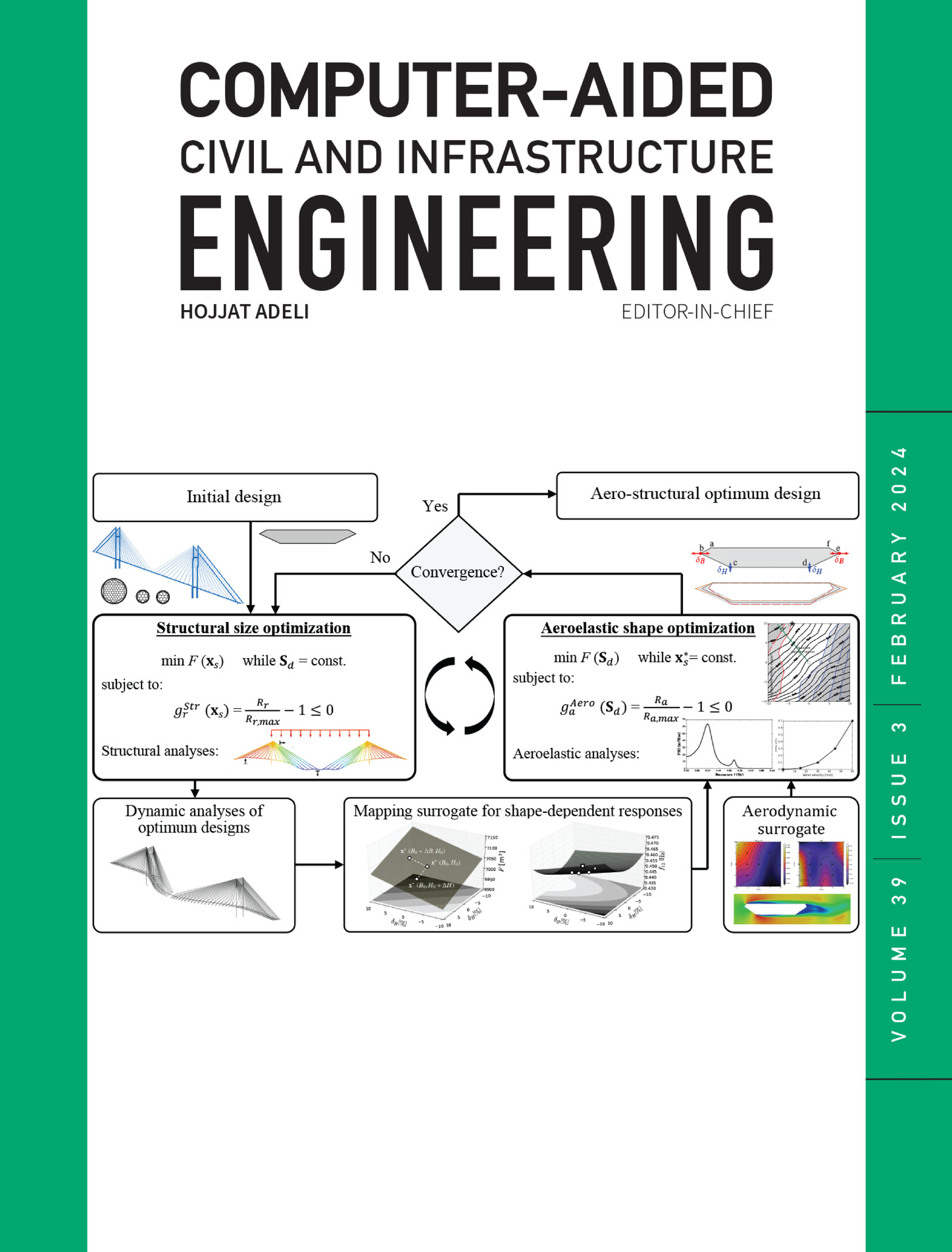A flexible road network partitioning framework for traffic management via graph contrastive learning and multi-objective optimization
IF 8.5
1区 工程技术
Q1 COMPUTER SCIENCE, INTERDISCIPLINARY APPLICATIONS
引用次数: 0
Abstract
The partitioning of a heterogeneously loaded road network into homogeneous, compact subregions is a fundamental prerequisite for the implementation of network-level traffic management and control based on the network macroscopic fundamental diagram. This study proposes a flexible road network partitioning framework that leverages the powerful feature extraction capabilities of self-supervised graph neural networks and employs a multi-objective optimization approach to balance regional homogeneity and compactness. A graph contrastive learning model is proposed to extract meaningful node embeddings that incorporate topology and attribute similarity information. Based on the learned node embeddings, the partition is determined by a parameter-free hierarchical clustering method and a subregion identification algorithm. Boundary tuning is then modeled as a bi-objective optimization problem to maximize regional homogeneity and compactness. A Pareto local search algorithm is developed to approximate the Pareto front. This study further demonstrates the extension of the proposed methods to scenarios with missing data. Finally, the methods are validated on real road networks with automatic license plate recognition data.基于图对比学习和多目标优化的交通管理柔性路网划分框架
将异构负载的路网划分为同质紧凑的子区域,是实现基于网络宏观基本图的网络级交通管控的基本前提。本研究提出了一种灵活的道路网络划分框架,该框架利用自监督图神经网络强大的特征提取能力,采用多目标优化方法来平衡区域均匀性和紧凑性。提出了一种图对比学习模型来提取包含拓扑和属性相似度信息的有意义的节点嵌入。基于学习到的节点嵌入,采用无参数分层聚类方法和子区域识别算法确定分区。然后将边界调整建模为双目标优化问题,以最大化区域均匀性和紧凑性。提出了一种近似帕累托前沿的帕累托局部搜索算法。本研究进一步证明了所提出的方法在数据缺失情况下的扩展。最后,利用车牌自动识别数据在真实道路网络上进行了验证。
本文章由计算机程序翻译,如有差异,请以英文原文为准。
求助全文
约1分钟内获得全文
求助全文
来源期刊
CiteScore
17.60
自引率
19.80%
发文量
146
审稿时长
1 months
期刊介绍:
Computer-Aided Civil and Infrastructure Engineering stands as a scholarly, peer-reviewed archival journal, serving as a vital link between advancements in computer technology and civil and infrastructure engineering. The journal serves as a distinctive platform for the publication of original articles, spotlighting novel computational techniques and inventive applications of computers. Specifically, it concentrates on recent progress in computer and information technologies, fostering the development and application of emerging computing paradigms.
Encompassing a broad scope, the journal addresses bridge, construction, environmental, highway, geotechnical, structural, transportation, and water resources engineering. It extends its reach to the management of infrastructure systems, covering domains such as highways, bridges, pavements, airports, and utilities. The journal delves into areas like artificial intelligence, cognitive modeling, concurrent engineering, database management, distributed computing, evolutionary computing, fuzzy logic, genetic algorithms, geometric modeling, internet-based technologies, knowledge discovery and engineering, machine learning, mobile computing, multimedia technologies, networking, neural network computing, optimization and search, parallel processing, robotics, smart structures, software engineering, virtual reality, and visualization techniques.

 求助内容:
求助内容: 应助结果提醒方式:
应助结果提醒方式:


